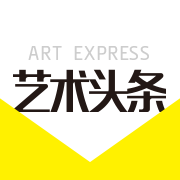
New exhibition spotlights the work of sculptor and painter Richard Artschwager
2015-06-26 12:06:36 未知
Groundbreaking artist Richard Artschwager radically upset the conventional norms of art in the 1960s, inserting his signature blp (an oblong form) into unexpected sites and settings, triggering a new path in contemporary art. Artschwager’s work is the focus of a new exhibition at the Frances Lehman Loeb Art Center at Vassar College. Punctuating Space: The Prints and Multiples of Richard Artschwager will be on view June 26-September 6, 2015.
Consisting of fifty-nine works (see the checklist of objects), this exhibition is the first study of the prints and multiples of Artschwager. It has been curated by Wendy Weitman, who served as a curator in the Department of Prints and Illustrated Books at the Museum of Modern Art until 2007. Weitman knew Artschwager and helped to organize his body of prints, drawings, and posters at his studio in the last years of his life. Currently, she is writing a catalogue raisonné on his editioned work.
Favoring commercial materials (his work features everything from Formica to Celotex to rubberized hair), Artschwager expanded the notion of artistic means to include the commonplace and industrial. “While his grisaille paintings imbue his landscapes, still-lifes, and portraits with a haunting, dream-like aura, his colorful, faux-wood sculptures of everyday objects arouse unsettling reactions that challenge the role of art,” says guest curator Wendy Weitman.
Born in Washington, D.C., in 1923, Artschwager grew up in an intellectual European atmosphere. His father was a German botanist and his mother an artist from Russia. The family uprooted to Las Cruces, New Mexico when the artist was eleven and the influence of the Southwest landscape played a significant role in his work as an artist. Initially planning to be a scientist like his father, Artschwager studied biology, chemistry, and mathematics at Cornell University. He earned a living as a child photographer at first and then became a furniture maker. By the mid-1950s his furniture-making business had grown quite substantially but he continued to take art classes. In 1960 he began making paintings from found photographs and sculpture from wood and Formica, and in 1964 his work appeared in a group exhibition with Pop artists James Rosenquist, Roy Lichtenstein, and Andy Warhol. By 1970 he was supporting himself as an artist and closed his furniture workshop.
“Encompassing both the hand-drawn and the fabricated, Artschwager’s prints and multiples remain a critically-acclaimed but under-recognized body of work,” Weitman notes.
Artschwager completed his first multiple in 1969, and doing so was a natural extension of his work as a furniture-maker. He intuitively understood the concept of the multiple and mass-produced objects. This includes Artschwager's arguably most radical works of art—his blps. These are small, lozenge-shaped, usually black, objects that he surreptitiously installed in unexpected places.
“Artschwager thought of the blps as a way to animate space, to draw a viewer's attention to unusual spots on a wall or to an odd part of a building,” Weitman explains. “Making the blps as multiples seemed like a natural extension of their already repetitious state and a perfect way to allow others to animate their own spaces.” For example, the work Locations comprises a blue Formica box containing five blps, each made from a different material—Formica, wood, mirrored glass, rubberized hair, and Plexiglas. No installation instructions are included. The owner completes the work, installing the six units in any configuration over any size wall or site, punctuating whatever space they occupy.
The artist continued to work with blps for most of his career, creating them in different shapes and sizes, and out of other industrial materials, often in very large or unlimited editions, from stickers to book covers. He made one of his most engaging in 1995, aptly titled Bristle Corner. In this example, he clearly indicates where the piece should be installed. Hung in the unlikely art zone of a room's corner, Bristle Corner forces us to open our eyes, teaches us how to look, and challenges our everyday perspective about the role of art.
Artschwager’s earliest prints were closely based on existing paintings. However, a series of ink drawings from 1974 became the source material for several of his etchings, and they continue this investigation of space. In these drawings Artschwager made an extended study of six furniture objects in a room. He experimented with imaginary visions that pose, distort, and relate the abstracted objects—table, window, mirror, door, basket, rug—while allowing them to retain their individual identities. By the late 1970s he had developed a preference for etching and continued to complete the majority of his prints in that medium.
However, Artschwager's interest in space was not limited to interiors. Landscapes and architecture were frequent motifs as well. In the late 1970s and 1980s he completed several landscape etchings, Cactus I of 1981 among the largest. Closely based on a 1972 painting, Bushes III, this landscape harks back to his youth in New Mexico. In this print Artschwager depicts the saguaro cacti that are common in the area, but he uses a specific perspective to distribute the plants in precise rows at precise angles. Artschwager's scientific background—his science and math studies at Cornell and his botanist father’s influence—is apparent in the exacting nature of this print.
Another important theme that runs through Artschwager's work is language. As the structure and perception of space intrigued him, similarly it was the structure and perception of language that he was drawn to. Thus, while words appear infrequently, his sculpture includes numerous examples of exclamation points, questions marks, quotation marks, and periods. The title of the exhibition is, in part, derived from this theme.
After its showing at the Art Center, Punctuating Space will travel to the Weatherspoon Art Museum at the University of North Carolina in Greensboro from October 3-December 13, 2015.
(责任编辑:张天宇)
注:本站上发表的所有内容,均为原作者的观点,不代表雅昌艺术网的立场,也不代表雅昌艺术网的价值判断。

 对话 | “道法自然” 范一夫山水中的破界与归真
对话 | “道法自然” 范一夫山水中的破界与归真 OCAT上海馆:参与构建上海艺术生态的十年
OCAT上海馆:参与构建上海艺术生态的十年 “纤维”提问2022:存在何“缓”?
“纤维”提问2022:存在何“缓”? 周杰伦都要去的伦敦弗里兹,到底有多火爆?
周杰伦都要去的伦敦弗里兹,到底有多火爆?
全部评论 (0)